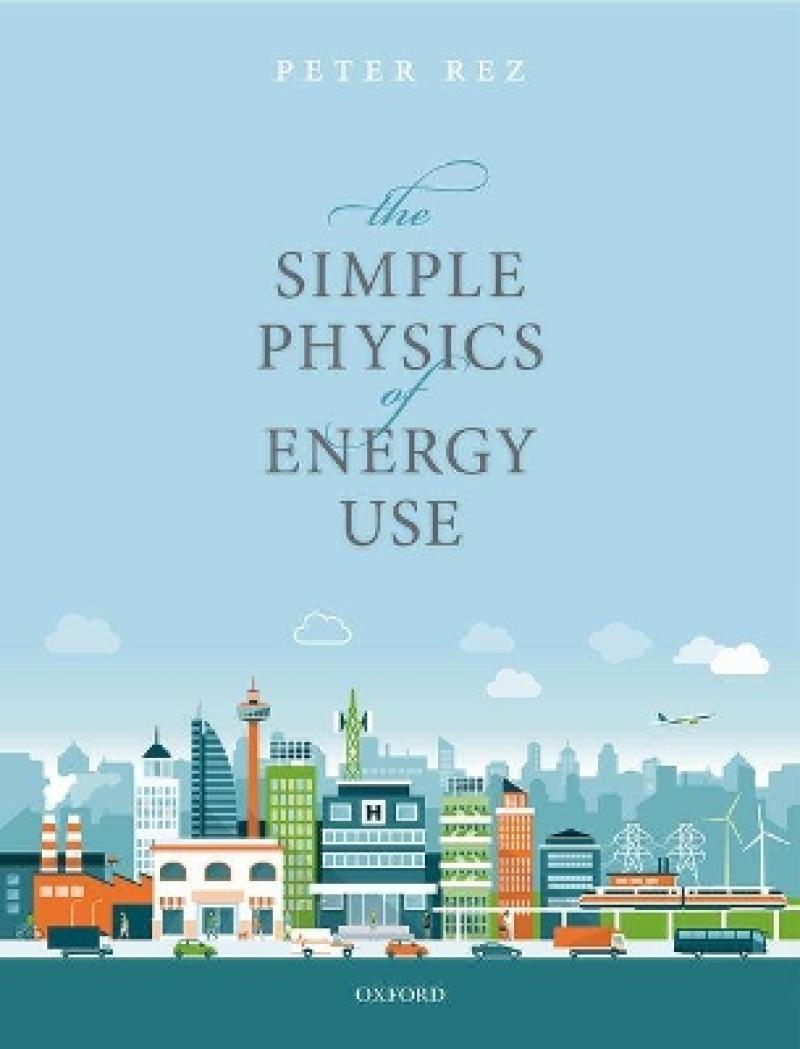As a society we use energy for climate control and lighting in buildings, moving people and goods form one place to another and making things. Our standard of living depends on transforming energy locked up in fossil fuels, atomic nuclei or provided free of charge by the sun and wind into a form that we can use. This book uses simple classical physics (mechanics, thermodynamics and electromagnetism) to quantitatively review sources of energy and how we use them. It addresses key questions such as: Can renewables such as solar and wind take over from fossil fuels? How much will their use reduce CO2 emissions?
To see what is important, numbers are used to estimate how big or small things are, but the maths is kept at the level of simple algebra and trigonometry. The aim is to give an overview of the big picture, to only worry about what really makes a difference. There's also growing concern that CO2 emissions from burning fossil fuels will change climate irreversibly in harmful ways.
Les mer
As a society we use energy for climate control and lighting in buildings, moving people and goods from one place to another and making things. This book uses simple classical physics (mechanics, thermodynamics and electromagnetism) to quantitatively review sources of energy and how we use them.
Les mer
PART I: CONTROLLING THE INDOOR ENVIRONMENT; PART II: MOVING PEOPLE AND THINGS AROUND; PART III: MAKING STUFF
Despite the considerable breadth of the book, if we zoom in on specific topics, there is quite a bit of detail... Opening up to nearly any page, there is a pairing of the simple physics and its application, often with very specific examples.
Les mer
Comprehensive discussion of energy use in buildings, transportation, and manufacture
Quantitatively reviews sources of energy using fundamental physics
Using simple algebra and trigonometry, the mathematics are accessible to undergraduate students
Discusses matching electrical power generation with demand
Les mer
Peter Rez completed his bachelors degree in Cambridge, and his PhD on Theory of Electron Scattering in Electron Microscopy, in Oxford. He has worked in industry (Kevex, VG Microscopes) on computer control and data acquisition in electron microscopy. He's been a professor at Arizona State since 1985. His interests have broadened to include general condensed matter theory as applied to batteries and strength of materials, radiation physics as applied to medical
physics and radiation detectors, biomineralization and biophysics. This book came about from the author's interest in energy policy, another area where science and policy making collide.
Les mer
Comprehensive discussion of energy use in buildings, transportation, and manufacture
Quantitatively reviews sources of energy using fundamental physics
Using simple algebra and trigonometry, the mathematics are accessible to undergraduate students
Discusses matching electrical power generation with demand
Les mer
Produktdetaljer
ISBN
9780198802303
Publisert
2017
Utgiver
Vendor
Oxford University Press
Vekt
634 gr
Høyde
246 mm
Bredde
189 mm
Dybde
15 mm
Aldersnivå
G, 01
Språk
Product language
Engelsk
Format
Product format
Heftet
Antall sider
304
Forfatter
